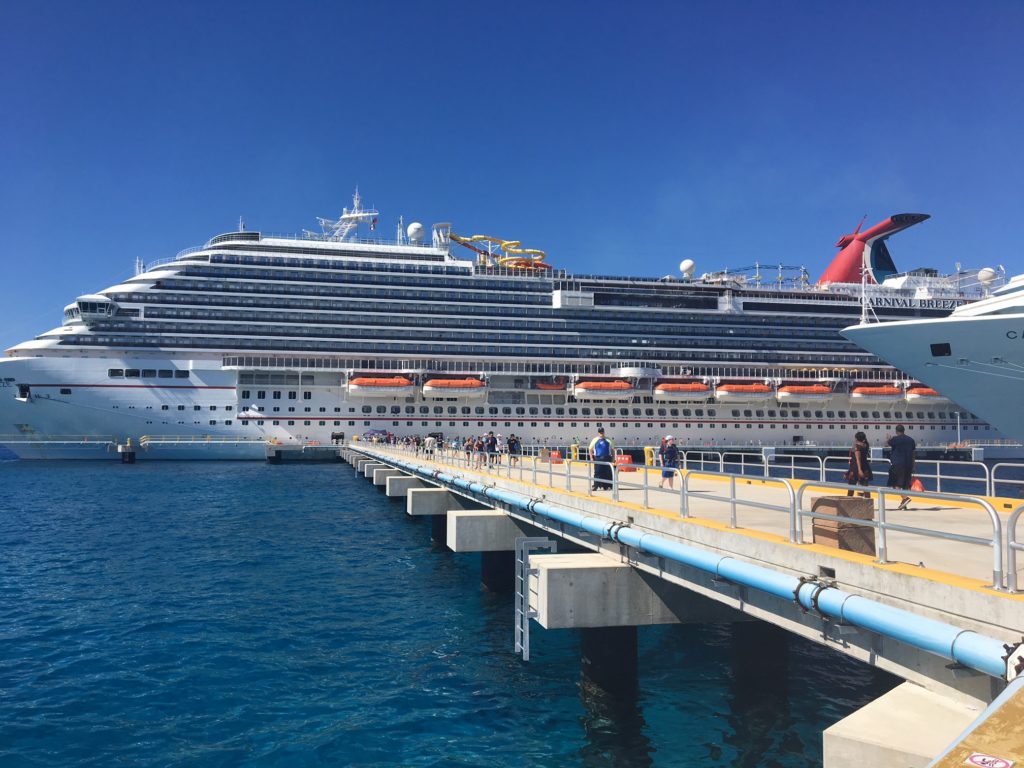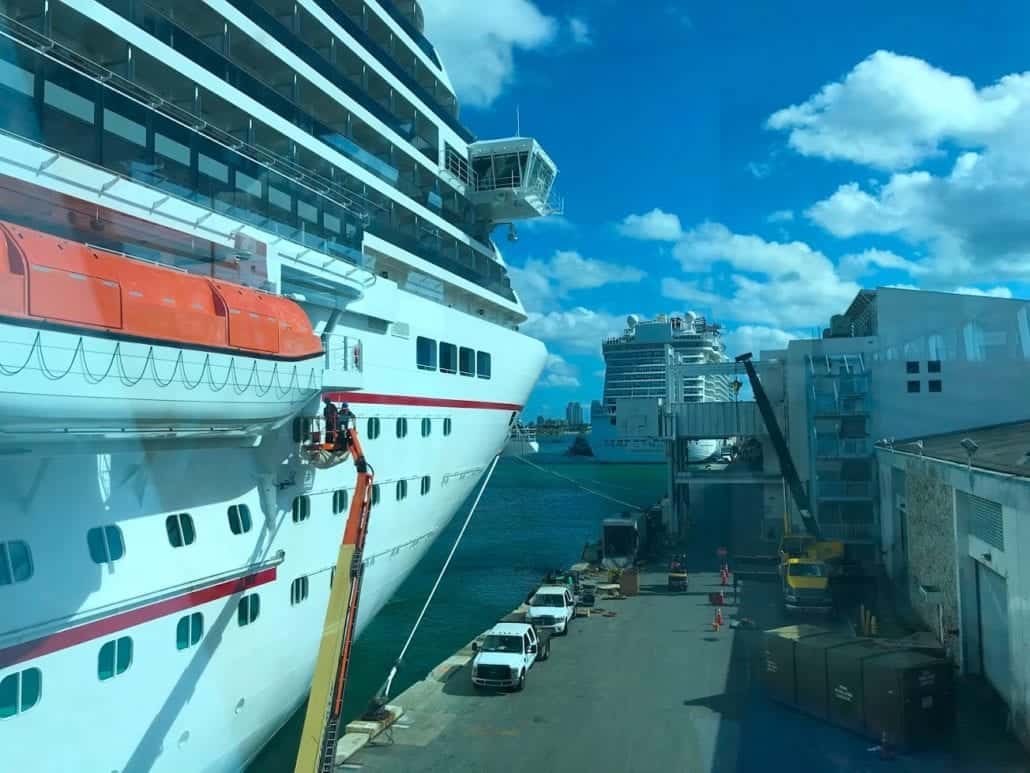Cruise Ship Speeds: A Comparative Analysis Of 7 Ships
Table Of Content

Did you know that the average cruising speed of a cruise ship is between 18 to 22 knots, covering around 480 nautical miles in a day? Understanding the factors that affect the speed of cruise ships is essential for planning your next cruise vacation. As you’ve learned, the size and weight of the ship, the number of passengers onboard, the distance and itinerary, and fuel consumption all contribute to determining the cruising speed. While cruise ships have the potential to reach higher speeds, they usually operate at their average cruising speed for efficiency and passenger comfort. So, sit back, relax, and enjoy the journey as your cruise ship glides through the waters at a comfortable and leisurely pace. Modern cruise ships rarely reach their top speed, except in specific situations such as avoiding bad weather or during sea trials.
Cruising Solo? List of Every Cruise Ship that Has Solo Cabins
But when asking how fast does a cruise ship go, that’ll depend on how far it needs to travel. They often use diesel fuel instead of liquefied natural gas so they aren’t quite as efficient as LNG powered ships. There are no official records regarding how fast a cruise ship goes because it varies depending on factors like weather conditions, sea state, etc. Unlike highway traffic, ships generally have no specific speed limits. Finally, a cruise ship maintains a certain speed to keep on schedule. If the captain goes faster, the ship may end up at the next port too early to dock, which may cause a delay, block other scheduled ships, and throw the itinerary off.
What Is Normal Cruising Speed?
To understand the term, we need to travel back in time to the days of ancient seafaring. Without the modern GPS tools and tracking equipment that we have today, sailors had to find other ways to measure their ship’s speed. If there is a storm at sea a cruise ship will have to go a little faster to get around it or to get away from it.
Why Can Newer Ships Go Faster?
Her writing is not only an exploration of travel and cruising; it is a testament to her zest for life, her commitment to family, and her love for the ocean. Her lifelong passion for travel has taken her to countless destinations around the globe, but cruising, undeniably, holds a special place in her heart. Judith has embraced the elegance of luxury liners, relished the intimacy of boutique ships, and marveled at the innovation found on the newest megaships.
How Royal Caribbean designed Icon of the Seas, the world's largest cruise ship - Fast Company
How Royal Caribbean designed Icon of the Seas, the world's largest cruise ship.
Posted: Fri, 26 Jan 2024 08:00:00 GMT [source]

However, speeds may be adjusted based on weather conditions or other factors. Additionally, it’s essential to understand the terminology used when discussing a ship’s speed. To learn more about what a knot is and how it relates to speed, check out our article explaining how fast a knot is. Slower speeds also promote comfort — you’ll want to enjoy smooth sailing while you dine, relax in the pool or get a massage. As you drift from one dreamy destination to the next, you’ll experience a more stable and less noticeable ride. Lastly, our ships are designed to increase passenger safety, which is always a priority.
At night, you’re not likely to see other ships or land, which can make the ship’s movement seem faster. Cruise ships don’t travel faster at night, but they might appear to because there are fewer distractions. The top speed is the maximum speed the ship can reach, but it’s rarely used because it consumes a lot of fuel. So when asking how fast can a cruise ship go, really you’re asking about theoreticals – because ships will only travel as fast as they need to. In the 1950s, the time it would take to complete an ocean crossing was a major selling point for cruise lines.
Before then, mariners had no way of expressing their speed other than by counting strokes of oars or sails. By dividing one minute into 60 seconds, sailors could easily calculate the number of minutes needed to cover a certain distance. However, since the invention of the steam-powered internal combustion engine, we now use miles instead of knots. Therefore, it makes sense to run everything possible during normal operation so that there isn’t excess fuel being burned just sitting idle.
I’m Bobby Pham, but you can call me “Bobby on Cruise.” I’ve been cruising the high seas and exploring the world for years, and I’m thrilled to share my passion and expertise with you. When not cruising, I spend my time on growing my marketing agency. The Ultimate World Cruise offered by Royal Caribbean is a 274-night journey that visits all 7 continents, 65 countries, over 150 ports of call, and 11 World Wonders. Any decisions to speed up or slow down are always made with everyone’s safety and comfort in mind.
How fast do cruise ships go?
Cruise ship speed can affect passenger comfort and the ship’s fuel efficiency. Higher speeds can cause more motion and vibrations, which can make some guests uncomfortable, especially if they are prone to seasickness. Cruise ship fuel efficiency varies based on factors such as itinerary and speed. Additionally, ocean currents can impact speeds and fuel consumption. It’s difficult to determine an average distance traveled on a full tank of fuel due to these variables.
MSC Cruises: What To Expect Onboard This Fast-Growing Cruise Line - Forbes
MSC Cruises: What To Expect Onboard This Fast-Growing Cruise Line.
Posted: Mon, 04 Sep 2023 07:00:00 GMT [source]
If you’re planning a cruise that includes an Atlantic crossing, you may be wondering how long it will take to reach your destination. The answer depends on several factors, including the itinerary, the ship’s speed, and the distance between ports. The average speed of a cruise ship is around 20 knots (23 miles per hour). You can read more about the differences between cruise ships and ocean liners here. Cruise ships can go faster when they’re going in the same direction as the waves. However, rather than waiting for the right sea conditions to break speed records, cruise lines always use an average that factors in going both with and against the waves.
While your car could easily leave a cruise ship in its wake on land, in the open ocean, it’s a whole different ball game. On average, cars can go about miles per hour, while cruise ships go around miles per hour. But, remember, while your car may win the speed race, it definitely can’t match the luxury of a cruise ship. After all, does your car have 24/7 room service and nightly shows? Speaking of innovative design enhancements, have you heard about the hull design tweaks? Scientists, engineers, and what I can only assume are maritime magicians working on optimizing hull shapes to reduce water resistance and hence increase ship speed.
Contrary to popular belief, cruise ships do not go faster at night. Setting sail on a cruise is a unique travel experience, a blend of fun consumption, comfort, and adventure, all against the backdrop of the open seas. While one's destination is indeed the primary focus, the speed at which the vessel travels—its cruising speed—can profoundly impact the journey. Modern cruise ships are a wonder of engineering, juggling size, speed, passenger comfort, and fuel efficiency. I’ve had the opportunity to experience some of the fastest cruise ships in the industry, such as Cunard’s Queen Mary 2, which can reach speeds of up to 30 knots.
During a ship’s sea trials, the captain will usually test the ship’s maximum speed to ensure the ship meets performance specifications. Additionally, the weather and ocean conditions can also impact how fast your cruise ship is sailing. If there’s a storm in the area, the captain might choose to sail faster or slower than a normal pace to ensure smooth sailings.
Generally, larger ships are slower due to their increased mass and greater resistance in the water. Weather conditions like strong winds and currents can also have a significant impact on a ship’s speed. Route and itinerary planning are integral to determining cruise ship speeds. Longer routes between ports may require higher speeds to keep up with the scheduled itinerary. Alternatively, shorter routes or those in close proximity to ports might allow for slower speeds, ensuring passengers can take in the sights and experience a relaxing voyage. Their navigation skills and decisions significantly influence the ship's speed.
Comments
Post a Comment